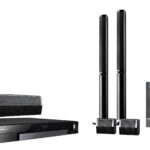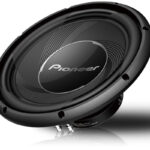To determine if amp gain is too high, check for distorted or muffled sound and excessive heat emitted from the amplifier. An excessively high amp gain can cause sound distortion and may also damage the amplifier due to overheating.
Achieving the optimal sound quality in an audio system can be a challenging task, especially when dealing with amplifier gain. An overly high amp gain can lead to detrimental consequences, including distorted sound and potential damage to the amplifier itself.
Therefore, understanding how to identify if amp gain is too high is crucial for audio enthusiasts and professionals. We will explore the telltale signs of excessive amplifier gain, such as distorted sound and excessive heat, while providing practical guidance on maintaining the optimal performance of your audio system. By paying attention to these indicators, you can ensure a pleasant and safe listening experience.

Credit: www.amazon.com
Signs Of High Amp Gain
One of the key indicators that the amp gain is too high is increased distortion. When the amp gain is set too high, the sound coming from the speakers becomes distorted. This distortion can manifest as a buzzing or crackling sound, and it significantly degrades the audio quality. Another sign of high amp gain is a clipping sound. Clipping occurs when the amplifier is pushed beyond its limits and tries to reproduce signals that are too large, resulting in a distorted and clipped waveform. Not only does this compromise the audio fidelity, but it can also cause speaker damage. When the amp gain is set too high, the excessive power output can damage the speakers, leading to blown drivers or even total speaker failure.
Increased Distortion
Increased gain levels in amplifiers can lead to distortion in sound. This distortion often manifests as a distorted sound and unwanted harmonics. As the gain is increased, the amplifier’s output exceeds its maximum capacity, resulting in an inability to accurately reproduce the input signal.
Distorted sound is characterized by an altered, unpleasant, or muffled rendition of the original audio. It can be recognized by the presence of clipping or harsh, buzzy noises in the audio playback. Additionally, increased gain may also introduce unwanted harmonics into the sound, creating a muddled or unnatural listening experience.
To determine if the amp gain is too high, it is essential to carefully listen for these indications of distortion and harmonics during audio playback. Adjusting the gain to an appropriate level, where the sound remains clear and free from distortion, is crucial for optimal audio quality.
| Indications of Too High Amp Gain: |
|---|
| 1. Distorted sound with clipping or harsh noises. |
| 2. Unwanted harmonics in the audio playback. |
| 3. Muffled or altered reproduction of the original audio. |
Properly setting the gain on an amplifier is vital to achieve the desired sound quality. By avoiding excessive gain that leads to distortion and unwanted harmonics, listeners can enjoy a more accurate and pleasant audio experience.
Clipping Sound
How to Tell If Amp Gain is Too High
Excessively high amp gain can lead to a clipping sound in your audio output. This occurs when the peak signals are cut off or distorted due to the amplifier being overloaded. The result is a sharp, distorted peak that can be unpleasant to listen to.
Sharp, Distorted Peaks
One of the key signs of amp gain being too high is the presence of sharp, distorted peaks in your audio. These peaks are often characterized by a sudden spike in volume, causing the audio to become harsh and unpleasant. It is crucial to adjust the amp gain appropriately to avoid this issue.
Loss of Clarity
Another indication of excessive amp gain is a loss of clarity in the audio. When the gain is set too high, it can result in an overly loud, muddy sound, making it difficult to discern individual elements within the audio. To maintain optimal sound quality, it is important to find the right balance and ensure that the gain is not set too high.
Speaker Damage
Speaker damage can be a sign of amp gain being set too high. Blown speakers are a common issue that occurs when the amp gain is cranked up beyond the speaker’s capacity to handle it. This can result in a distorted or buzzing sound, or even complete speaker failure. Overheating is another problem that can occur when the amp gain is too high. Excessive power to the speakers can cause them to heat up quickly and potentially damage the internal components. This can lead to reduced speaker lifespan and compromised sound quality.
Frequently Asked Questions
How Can I Tell If My Amp Gain Is Too High?
If you notice distortion or clipping in your audio signal, it’s a sign that your amp gain is too high. The sound may become harsh or distorted, and it can damage your speakers or other audio equipment. To avoid this, you can use a multimeter to measure the voltage output and adjust the gain accordingly.
What Are The Consequences Of Having Amp Gain Set Too High?
Setting your amp gain too high can lead to various consequences. It can cause distortion or clipping, which affects the sound quality and can damage your speakers. It can also increase the likelihood of overheating and may reduce the lifespan of your audio equipment.
To prevent these issues, it’s important to set the gain properly.
Can A High Amp Gain Cause Damage To My Speakers?
Yes, a high amp gain can potentially damage your speakers. When the gain is set too high, it can cause distortion and clipping in the audio signal, which can produce excessive power that your speakers are not designed to handle.
This can lead to blown speakers or reduced sound quality. It’s important to find the right balance when setting the amp gain.
What Is The Ideal Amp Gain Setting?
The ideal amp gain setting depends on various factors, including your audio system and personal preferences. It’s recommended to start with a low gain setting and gradually increase it until you achieve the desired volume without any distortion or clipping.
It’s important to listen carefully and make adjustments accordingly to find the ideal balance for your specific setup.
Conclusion
To conclude, understanding the signs of excessively high amp gain is crucial in order to protect your audio equipment and avoid distorted sound. By paying attention to indicators such as distortion, clipping, and excessive heat, you can easily identify if your amp gain is set too high.
Remember to strike the right balance between achieving desired volume levels and maintaining the quality of your audio setup. Regularly monitoring and adjusting amp gain will ensure optimal performance and longevity for your system.








